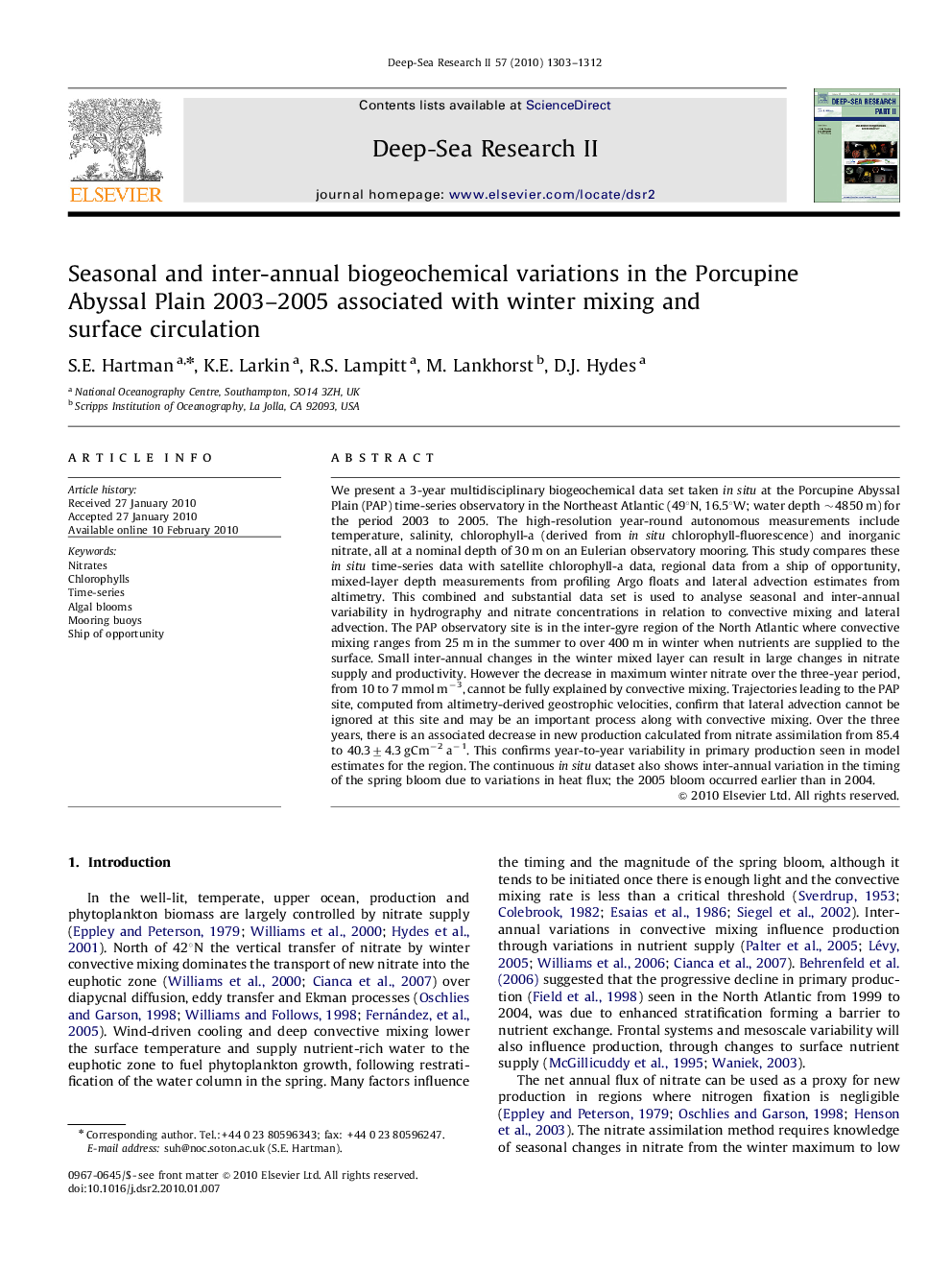| Article ID | Journal | Published Year | Pages | File Type |
|---|---|---|---|---|
| 4536955 | Deep Sea Research Part II: Topical Studies in Oceanography | 2010 | 10 Pages |
We present a 3-year multidisciplinary biogeochemical data set taken in situ at the Porcupine Abyssal Plain (PAP) time-series observatory in the Northeast Atlantic (49°N, 16.5°W; water depth ∼4850 m) for the period 2003 to 2005. The high-resolution year-round autonomous measurements include temperature, salinity, chlorophyll-a (derived from in situ chlorophyll-fluorescence) and inorganic nitrate, all at a nominal depth of 30 m on an Eulerian observatory mooring. This study compares these in situ time-series data with satellite chlorophyll-a data, regional data from a ship of opportunity, mixed-layer depth measurements from profiling Argo floats and lateral advection estimates from altimetry. This combined and substantial data set is used to analyse seasonal and inter-annual variability in hydrography and nitrate concentrations in relation to convective mixing and lateral advection. The PAP observatory site is in the inter-gyre region of the North Atlantic where convective mixing ranges from 25 m in the summer to over 400 m in winter when nutrients are supplied to the surface. Small inter-annual changes in the winter mixed layer can result in large changes in nitrate supply and productivity. However the decrease in maximum winter nitrate over the three-year period, from 10 to 7 mmol m−3, cannot be fully explained by convective mixing. Trajectories leading to the PAP site, computed from altimetry-derived geostrophic velocities, confirm that lateral advection cannot be ignored at this site and may be an important process along with convective mixing. Over the three years, there is an associated decrease in new production calculated from nitrate assimilation from 85.4 to 40.3±4.3 gCm−2 a−1. This confirms year-to-year variability in primary production seen in model estimates for the region. The continuous in situ dataset also shows inter-annual variation in the timing of the spring bloom due to variations in heat flux; the 2005 bloom occurred earlier than in 2004.
